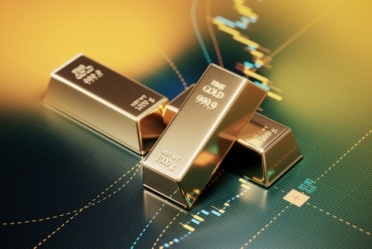 Ten thousand, said the gentleman.
Ten thousand, said the gentleman.
Around 13 years back, we had put up a stall in Mumbai to interact with potential customers. My area of focus at that time was commodities. Being a novel asset then, my interactions with customers, for most part, basically centred around introduction to the field, and educating them about how hedging is done, which commodities are suitable for trading, the factors affecting their price moves, etc. And for the minority who had already dabbled into commodities, discussions usually centred on price forecasts. My interactions with spices hedgers, gold traders, journalists and other market participants, made this job easy, while knowledge of technical analysis gave me the edge. Often, gold was the easiest subject to open the conversation with a potential customer. For two reasons, mainly. For one, gold required no introduction to Indians and almost every one, had their own reason to buy gold, and was willing to arrange money for the same. Gold to them was synonymous with a lot of things…investment, marriage, jewellery, inflation hedge, portfolio diversification etc. Secondly, there was lot of authentic information available for reading; so you always had something to speak about.
So, it was gold again that had got me into conversation with this gentleman. He had a certain aura around him which got me curious to know what he is bubbling with and hence I allowed him to lead the conversation. But, the figure that he forecast for gold, threw me off the track. I asked him if he was referring to Indian gold prices, as it was trading around 9000 rupees in India per 10 g and had begun to show signs of a raging bull market. He hesitated a bit, but insisted that it was for international gold, before walking away. It occurred to me that he asserted himself, only so as not to admit his error, as gold was trading at sub $ 700 levels per ounce in international markets, and it would rise to only $ 1920 in a few years’ time in 2011 before ending the decade long bull run. It led me thinking, what makes us veer away from logic, when it comes to gold?
Let us pay a quick visit to 1944, when the recent history of gold was re written.
When the 1944 conference of the World War II allied nations drafted the Bretton woods agreement, a new global monetary system was established, through which central banks promised to peg their currencies at a fixed exchange rate to the US dollar. What did this seek to achieve? Firstly, it elevated the US dollar as the global currency. Since US had three fourth the worlds’ gold, it was the logical step at that time. Secondly, it sought to make a steady transition from the gold standard. Until then, the printing of currency by any country was pegged to the value of gold it had, in turn guaranteeing that its currency would be redeemed for its value in gold. But of course, the pressures of being the global currency were too much, even for a super power like US, leading to the collapse of Bretton woods system. The trigger of the collapse was a run on the US gold reserves, primarily due to a combination of recession and inflation, which necessitated US revaluing dollar’s value in gold to 1/38 of an ounce initially and then to 1/42 an ounce. This in turn prompted markets to chase to gold, pushing prices higher to 120 dollars per troy ounce, in no time, sharply up from the 35 mark, fixed at the time of Bretton Woods agreement. It is important to note here that, on hind sight, Bretton Woods agreement was transitional rather than replacement and not surprisingly, at the first sign of crisis, people went back to what they knew best – hoarding gold. It is a habit that is ingrained in us. Not for no reason. Our knowledge of humans coming into contact with gold, dates as far back as 5000 B.C. The many features of gold, be it purity, inertness, ductility, malleability, and thermal properties ensured that we have always reserved a place for it in our myths, be it kings or gods. There is also ample evidence of its usage in Sumerian civilisation to ancient Egypt. In the 15th Century BC, Pharaoh Thutmose III had a golden chariot made in Babylon. He brought a lot of gold to Egypt, which had been steadily gained through assistance from the mines in Nubia (modern Sudan) and the Arabian Peninsula. The Egyptians were the first to step into professional mining, in which thousands of slaves worked in deplorable conditions. Gold was a symbol of power, prestige and immortality. This is perhaps one of the core reasons why Gold retained a permanent affinity with man, in one form or the other.
Gold’s influence in the new world perhaps took a turn with the independence of US from the British Empire. Soon after its independence, unchecked printing of paper money in the absence of enough gold reserves, and the Mexican-American war had roiled US monetary system. But discovery of gold in a California mill attracted a mad rush of people from rest of US and around the world to the site. Some historians put this number at around 300000 people. Seeing the mayhem, Henry David Thoreau, famous writer and philosopher of those times, said: “The recent rush to California and the attitude of the world, even its philosophers and prophets, in relation to it appears to me to reflect the greatest disgrace on mankind. That so many are ready to get their living by the lottery of gold-digging without contributing any value to society, and that the great majority who stay at home justify them in this both by precept and example! . . . Going to California. It is only three thousand miles nearer to hell. . . . Did God direct us so to get our living, digging where we never planted, and He would perchance reward us with lumps of gold?”
The sudden discovery of gold and the large influx of people had a massive change in the landscape of California and that of US economy. The money supply revived US economy and the discovery site saw expansion in agriculture, etc. to meet the need of the new settlers, even as the natives suffered. The new found purchasing power also boosted economies across globe for food, clothing, building materials, manufactured goods etc. It even spawned more gold rushes. An Australian prospector was smart enough to note the similarity between California and the geography of his own country, and went back to discover gold, which triggered Australia’s own gold rush. Several other countries have also witnessed similar gold rushes, prominent among them being New Zealand in 1861, South America in 1884, South Africa in 1896, and Klondike in Canada, also in 1896. With time, California’s name became so connected with the Gold rush that “California Dream” came to be synonymous with quick gains or new beginnings. And today, that is Gold’s promise to most.
Today, global monetary system has moved away from the gold standard and Bretton woods, but several of the erstwhile key players like Dollar, IMF & World Bank, central banks, and gold, are still performing important roles, though of different degrees. However, recurring episodes of global financial crises are beginning to erode the trust in paper currencies. Then there is the argument about dollar being seen as the reserve currency despite US accounting for only less than 25 percent of global GDP, while China holds the world’s largest reserves. This explains the euphoria that followed the introduction of bitcoin which resembled a bit of the gold rush of the previous centuries. Since information spreads much faster than a century earlier, and since the custodians of the global monetary system, viz. central banks were on the same page regarding the threat posed by an alternate currency to the existing system, luckily we did not have men leaving households in search of the next gold. Perhaps, gold’s rise in recent years even amidst benign inflation is holding a mirror to world’s clamour for a more robust financial system. But, for the millennial chasing the California Dream, equity is still his gold.








